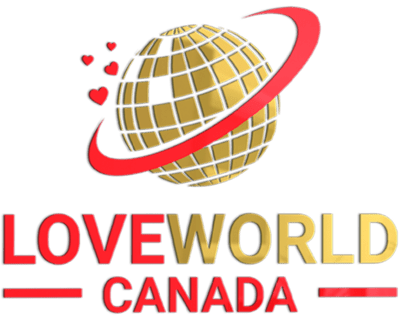Operation Ranch Hand:Chemical Warfare in Vietnam

OPERATION RANCH HAND: CHEMICAL WARFARE IN VIETNAM
This brings us to the first question regarding what led to the use of agent orange in the Vietnam war? Phenoxy herbicides are synthetic chemical analogues of hormones found in plants that regulate the rate and pattern of plant growth; these herbicides cause aberrant growth or death of certain plant species. The types of herbicide used in Vietnam were very effective at killing certain types of tropical vegetation, and the aerial spraying of herbicides allowed for easy application over a large-area. The herbicides were applied aerially at a rate of approximately 3 gallons per acre. According to military records of Operation Ranch Hand, from August 1965 to February 1971, a total of 17.6 million gallons of herbicide was sprayed over approximately 3.6 million acres in Vietnam.
The different types of herbicide used by US forces in Vietnam were identified by a code name referring to the colour of the band around the 55 gallon drum that contained the chemical. These included Agents Orange, White, Blue, Purple, Pink, and Green. From 1962 to 1965, small quantities of Agents Purple, Pink, and Green were used. From 1965 to 1970, Agents Orange, White, and Blue were employed, and from 1970 to 1971, only Agents White and Blue were used in the defoliation program.
Agent Orange was the most extensively used herbicide in Vietnam. In particular, during the Vietnam War, the US military engaged in an aggressive program of chemical warfare codenamed Operation Ranch Hand. From 1961 to 1971, the US military sprayed a range of herbicides across more than 4.5 million acres of Vietnam to the forest cover and food crops used by enemy North Vietnamese and Viet Cong troops. US aircraft were deployed to douse roads, rivers, canals, rice paddies and farmland with powerful mixtures of herbicides. During this process, crops and water sources used by the non-combatant native population of South Vietnam were also hit.
In all, American forces used more than 20 million gallons of herbicides in Vietnam, Laos and Cambodia during the years of Operation Ranch Hand. Herbicides were also sprayed from trucks and hand-sprayers around U.S. military bases. Some military personnel during the Vietnam War era joked that “Only you can prevent a forest,” a twist on the US Forest Service’s popular fire-fighting campaign featuring Smokey the Bear. Then, the military use of 2,4,5-T, and thus Agent Orange, was eventually suspended by the Department of Defense in April 1970.
GENETIC MUTATIONS: THE RAMIFICATIONS OF THE DIOXIN IN AGENT ORANGE
And now onto our second question regarding what are the ramifications of dioxin in agent orange? To begin with, in addition to Agent Orange’s active ingredients, which caused plants to “defoliate” or lose their leaves, Agent Orange contained significant amounts of 2,3,7,8-tetrachlorodibenzo-p-dioxin, often called TCDD, a type of dioxin.
But, dioxin was not intentionally added to Agent Orange; rather, dioxin is a byproduct that’s produced during the manufacturing of herbicides. It was found in varying concentrations in all the different herbicides used in Vietnam.
Furthermore, dioxins are also created from trash incineration; burning gas, oil and coal; cigarette smoking and in different manufacturing processes such as bleaching. The TCDD found in Agent Orange is the most dangerous of all dioxins. So much so, that many have discovered that even 4-5 generations after the Vietnam war, many children of parents who were exposed to agent orange and unfortunately born with deformities, because dioxin can be passed down from the exposed mother to their child!
THE FIGHT OVER AGENT ORANGE CONTINUES
And now onto the final question regarding what are the legal and political consequences that have followed the use of agent orange in the Vietnam war? To begin with, because Agent Orange (and other Vietnam-era herbicides) contained dioxin in the form of TCDD, it had immediate and long-term effects. As we’ve established, dioxin is a highly persistent chemical compound that lasts for many years in the environment, particularly in soil, lake and river sediments and in the food chain. Dioxin accumulates in fatty tissue in the bodies of fish, birds and other animals. Most human exposure is through foods such as meats, poultry, dairy products, eggs, shellfish and fish.
Furthermore, studies done on laboratory animals have proven that dioxin is highly toxic even in minute doses. It is universally known to be a carcinogen (a cancer-causing agent). Short-term exposure to dioxin can cause darkening of the skin, liver problems and a severe acne-like skin disease called chloracne. Additionally, dioxin is linked to type 2 diabetes, immune system dysfunction, nerve disorders, muscular dysfunction, hormone disruption and heart disease. And developing unborn children are particularly sensitive to dioxin, which is also linked to miscarriages, spina bifida and other problems with foetal brain and nervous system development.
Then, questions regarding Agent Orange arose in the United States after an increasing number of returning Vietnam veterans and their families began to report a range of afflictions, including rashes and other skin irritations, miscarriages, psychological symptoms, type 2 diabetes, birth defects in children and cancers such as Hodgkin’s disease, prostate cancer and leukaemia.
In 1988, Dr. James Clary, an Air Force researcher associated with Operation Ranch Hand, wrote to Senator Tom Daschle, “When we initiated the herbicide program in the 1960s, we were aware of the potential for damage due to dioxin contamination in the herbicide. However, because the material was to be used on the enemy, none of us were overly concerned. We never considered a scenario in which our own personnel would become contaminated with the herbicide.”
In 1979, a class action lawsuit was filed on behalf of 2.4 million veterans who were exposed to Agent Orange during their service in Vietnam. Five years later, in an out-of-court-settlement, seven large chemical companies that manufactured the herbicide agreed to pay $180 million in compensation to the veterans or their next of kin. Various challenges to the settlement followed, including lawsuits filed by some 300 veterans, before the U.S. Supreme Court confirmed the settlement in 1988. By that time, the settlement had risen to some $240 million including interest.
In 1991, President George H.W. Bush signed into law the Agent Orange Act, which mandated that some diseases associated with Agent Orange and other herbicides (including non-Hodgkin’s lymphoma, soft tissue sarcomas and chloracne) be treated as the result of wartime service. This helped codify the VA’s response to veterans with conditions related to their exposure to Agent Orange.
Chemical warfare was first used by the British in Malaysia, and the US imitated similar conduct in Vietnam. Similarly, Germans first began to develop atomic weapons, before the US saw a need to accomplish the creation first through the Manhattan project, with the Soviet Union building its own weapons therefore in response. The same can be said with the use of napalm; after many governments saw its use in Vietnam, it was adopted in other parts of the world like France, Rhodesia and South Africa. All of this is to say that not only has war resulted in the invention of truly horrendous weapons, but (if not careful), this also tends to produce a desire for imitation, and thus a widespread adoption and use of weapons that should have not been available to begin with. Meanwhile, citizens and people born generations later are left to suffer the ramification of these decisions.
And so, the need and urgency to pray for leaders and nations so that they always make wise decisions must ever be lost on us – lest we see history repeat itself, which does tend to happen if we are not careful to learn from it.
Written By Lindokihle Mabaso
